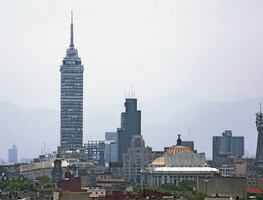Más Información

Alito Moreno niega ser informante de Marco Rubio y EU en Con los de Casa; asegura no arrepentirse de golpe contra Noroña

Refuerzan Palacio Nacional con vallas; normalistas alistan marcha por el 11 aniversario del caso Ayotzinapa

Sheinbaum responde a Salinas Pliego; Presidenta lanza una serie de preguntas a empresario tras advertencia de demandas

Peña Nieto no quiso gobernar, dejó el país en manos de Videgaray y Osorio Chong: Elba Esther Gordillo
The exhibition “City and Cosmos: The Arts of Teotihuacan ” which opened last week at the Los Angeles County Museum of Art (LACMA) presents the latest findings on this ancient Mesoamerican city.
The exhibition, running until July 15 , includes almost 200 artifacts ranging from monumental sculptures made of volcanic rock to colorful mural paintings and small pieces made of precious stones – many of which had never been displayed in the United States before.
The chief curator of the exhibition, Matthew Robb, was in charge of selecting the artifacts for the exhibition, a task that took him five years. After being displayed in Los Angeles, the exhibition is expected to be taken to other U.S. and Mexican cities as well.
“There are many objects being displayed for the first time because they are the result of recent researches,” said Diego Prieto, General Director of the National Institute of Anthropology and History of Mexico (INAH).
The exhibition explores Teotihuacan as a cohesive civic unit and how the artifacts being displayed were used to celebrate the foundation of the city and their link to vital elements, such as fire and water.
The exhibition contains the recent findings of Tlalocan – the name given to an underground offering site –, a simulation of the underworld discovered by a team of Mexican archeologists led by Sergio Gómez in 2003.
The other sections of the exhibition cover artistic expressions and deities.
am










